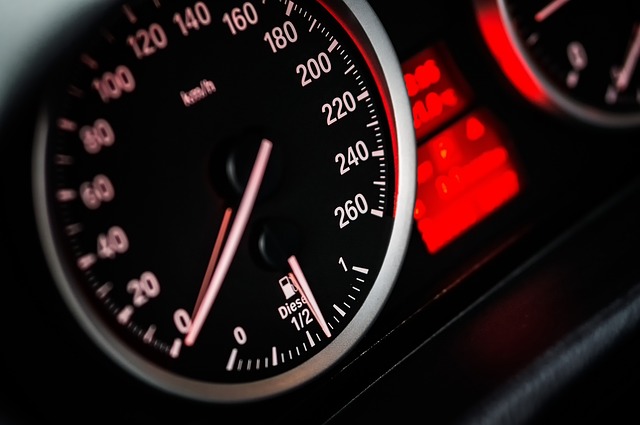Looking to register your car in California? This comprehensive guide walks you through every step of the process, from gathering essential documents to submitting your application. Understanding the California vehicle registration process is crucial, ensuring a smooth transition for new or transferred vehicles. We’ll show you how to verify your Vehicle Identification Number (VIN) using trusted DMV vin verifier tools and navigate the system efficiently.
- Understanding the California Vehicle Registration Process
- Gather Required Documents for Car Registration
- Visit a California DMV Office or Use Online Services
- Verify Your Vehicle's VIN (Vehicle Identification Number)
- Complete and Submit Your Car Registration Application
Understanding the California Vehicle Registration Process

In California, registering a car involves a straightforward process that begins at the Department of Motor Vehicles (DMV). Understanding how to navigate this process is crucial for ensuring your vehicle’s legal status and avoiding potential fines. First, you’ll need to gather essential documents like proof of ownership, insurance, and identification. Once prepared, visit your nearest DMV office or utilize their online services for registration. The DMV will verify your vehicle’s information, including its Vehicle Identification Number (VIN), to ensure it matches the data in their records. This step is a vital part of the registration process and often involves a VIN inspection using specialized tools.
For added convenience, many Californians opt for mobile VIN verification services. These allow you to complete the VIN inspection from the comfort of your home or office. A mobile vin verifier ensures accuracy and saves time by providing immediate feedback on your vehicle’s status, making registration a seamless experience.
Gather Required Documents for Car Registration

Before you start the registration process, make sure you have all the necessary documents. The California Department of Motor Vehicles (DMV) requires a range of paperwork to ensure a smooth and legitimate car registration. A key document is the Vehicle Identification Number (VIN) verifier, which can be obtained through various methods, including a mobile VIN verifier app or service. This tool checks the VIN’s validity and ensures it matches the vehicle’s specifications.
You’ll also need proof of ownership, typically a title document; valid identification like a driver’s license or state ID; current registration (if transferring from another state); and proof of insurance coverage. Additionally, a completed DMV Form 137 (Vehicle Registration Application) is essential. Ensure all documents are up-to-date and accurate to avoid any delays in the registration process.
Visit a California DMV Office or Use Online Services

When registering your car in California, one of the initial steps is to verify your vehicle’s identity through its unique Vehicle Identification Number (VIN). You can accomplish this in two convenient ways: by visiting a local California Department of Motor Vehicles (DMV) office or utilizing their online services. The DMV offers a VIN verifier tool that allows you to quickly and easily check your car’s history, ensuring it meets all legal standards before registration.
For a more efficient process, consider using mobile vin verification services, which can be done right from the comfort of your home. This method streamlines the initial inspection step, making it easier for residents across California to register their vehicles without the hassle of long DMV lines. A simple online VIN inspection can save you time and ensure a smoother registration experience.
Verify Your Vehicle's VIN (Vehicle Identification Number)

Before you start the registration process, it’s crucial to verify your vehicle’s Vehicle Identification Number (VIN). This unique 17-character code is a critical piece of information for identifying your car and ensuring a smooth registration experience in California. You can easily check your VIN using a DMV vin verifier or even consider a mobile vin inspection service, which allows you to verify the number from the comfort of your home or garage.
Having an accurate VIN is essential as it helps avoid potential issues with registration and ensures your vehicle’s history is correctly documented. It’s one of the first steps in navigating California’s car registration process, making it a simple yet vital task for new and existing vehicle owners.
Complete and Submit Your Car Registration Application

After gathering all the necessary documents and ensuring your vehicle meets California’s requirements, it’s time to complete and submit your car registration application. You can do this either online or in person at a DMV office. If opting for the former, visit the official DMV website and locate the dedicated car registration form. Fill out every section accurately, double-checking your information for any errors. One crucial detail to include is your Vehicle Identification Number (VIN), which you can easily verify using a trusted DMV VIN verifier.
For convenience, many individuals prefer the mobile VIN verification process, where a professional inspects and confirms your vehicle’s details using their own equipment. This option is particularly appealing for those with busy schedules or limited mobility. Alternatively, if submitting in person, prepare all required documents and head to a local DMV branch. An agent will guide you through the process, ensuring your application meets all legal standards before processing your car registration.
Registering your car in California is a straightforward process that can be completed in-person or online. By gathering the necessary documents, including proof of ownership and identification, and verifying your vehicle’s VIN with a trusted DMV vin verifier, you’re well on your way to ensuring a smooth registration experience. Following the steps outlined in this guide, you’ll have your California vehicle registration taken care of promptly.
